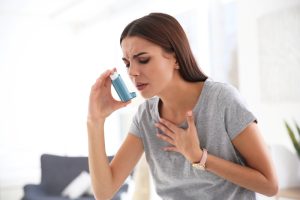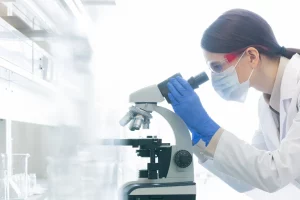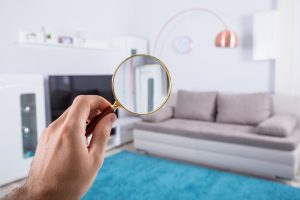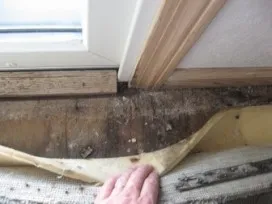Homeworks Environmental
Mold Testing Services
Our mold testing services identify the presence and types of mold in a building or environment. We use specialized tools and techniques, such as air and surface sampling, to collect mold samples and analyze them in a laboratory. The results of the testing are used to assess potential health risks, determine the need for remediation, and evaluate the effectiveness of remediation efforts. Our team has specialized training and experience in identifying and assessing mold growth, and we are equipped to provide comprehensive and objective evaluations of mold situations.
What is Mold Testing?
Mold testing involves collecting direct samples of mold and analyzing them to determine the type and quantity of mold present in a building. This process is typically conducted by a professional laboratory specializing in mold testing. Samples can be collected using various methods, such as swabbing, tape lifting, or bulk sampling. The laboratory then employs techniques such as microscopy, culture, or molecular analysis to identify the type of mold present in the samples.
The results of mold testing are used to guide remediation efforts and ensure that mold is properly removed to protect the health and safety of those living or working in the building. It is important to note that mold testing is just one aspect of a comprehensive mold investigation and should be used in conjunction with a visual inspection and moisture assessment.
Mold Testing Can Identify
Mold testing can identify the type of mold present in your environment, which is crucial for determining potential health effects.
The Goal of Direct Surface Mold Testing
The goal of direct surface mold testing is to understand the levels of mold growth and amplification in buildings. While there are no EPA or OSHA standards for fungi and mold levels in indoor environments, several generally accepted collection methods are available to inspectors for studying mold and bacteria in indoor settings. Comparison with reference samples, typically taken outdoors or from non-complaint areas, can be a useful approach.
It is important to note that different types of mold testing have various advantages and disadvantages. The most appropriate type of testing will depend on the specific situation and the goals of the testing. A professional mold inspector can recommend the best type of testing for your specific needs.
Our Methods of Mold Testing
Mold testing is essential for identifying the presence and types of mold in a residence or business. Various methods can be used to collect mold samples and analyze them in a laboratory. Here are some common mold testing methods:
- Air Sampling: This method involves collecting air samples to detect mold spores in the indoor environment. Air sampling can help identify the concentration of mold spores and determine if they exceed normal levels.
- Surface Sampling: Surface sampling involves collecting samples from visible mold growth on surfaces using swabs, tape lifts, or bulk samples. These samples are then analyzed to identify the type of mold present.
- Bulk Sampling: Bulk sampling involves collecting pieces of building materials, such as drywall or insulation, that are suspected of having mold growth. These samples are analyzed to determine the type and quantity of mold present.
- Swab Sampling: Swab sampling uses a sterile swab to collect mold samples from surfaces. The swab is then sent to a laboratory for analysis to identify the type of mold.
- Tape Lift Sampling: Tape lift sampling involves pressing a piece of clear tape onto a surface with visible mold growth. The tape is then analyzed in a laboratory to identify the type of mold present.
Each mold testing method has its advantages and disadvantages, and the most appropriate method will depend on the specific situation and goals of the testing. A professional mold inspector can recommend the best type of testing for your needs.
For comprehensive mold testing services, it is essential to use specialized tools and techniques to ensure accurate results and effective remediation.
If you would like your home or office professionally tested for mold, please contact Homeworks Environmental for further information.
Surface Sampling Methods
Surface sampling can be useful for differentiating between mold growth and stains of various kinds. This type of sampling is used to identify the type of mold growth that may be present and help investigate water intrusion. Surface sampling can help the interpretation of building inspections when used correctly. The following are the different types of surface samples that are commonly used to perform a direct examination of a specific location. Spore counts per area are not normally useful.
Tape (or tape-lift)
These samples are collected using clear adhesive tape or adhesive slide for microscopic examination of suspect stains, settled dust and spores. Tape lifts are an excellent, non-destructive method of sampling. The laboratory is usually able to determine if the there is current of former mold growth or if only normally settled spores were sampled.
Bulk
This is a destructive test of materials (e.g., settled dust, sections of wallboard, pieces of duct lining, carpet segments, return-air filters, etc.) to determine if they contain or show mold growth. Bulk sampling collects a portion of material small enough to be transported conveniently and handled easily in the laboratory while still representing the material being sampled. A representative sample is taken from the bulk sample and can be cultured for species identification or analyzed using direct microscopy for genus identification. The laboratory is usually able to determine if the there is current of former mold growth or if only normally settled spores were sampled.
Swab
A sterile cotton or synthetic fiber-tipped swab is used to test an area of suspected mold growth. Samples obtained using this method can be cultured for species identification or analyzed using direct microscopy for genus identification. The laboratory is usually able to determine if there is current of former mold growth or if only normally settled spores were sampled. Identified spores are generally reported as “present/absent”.









